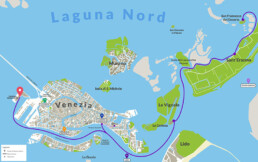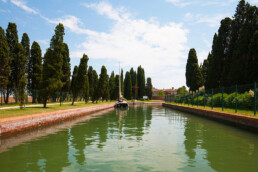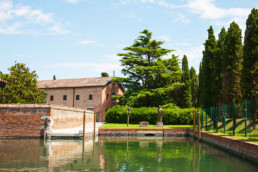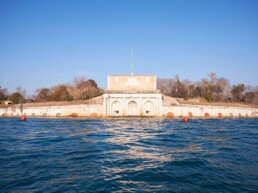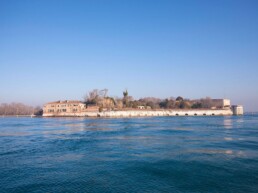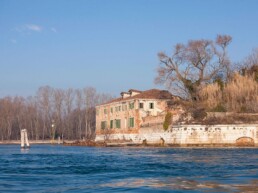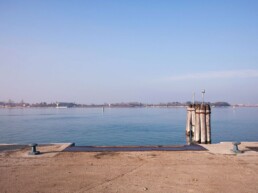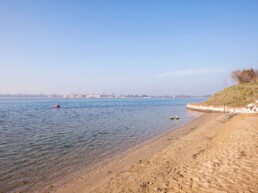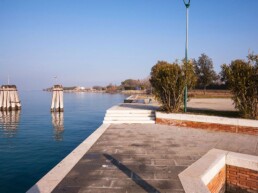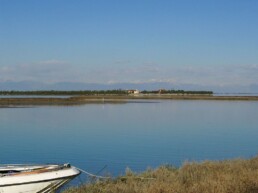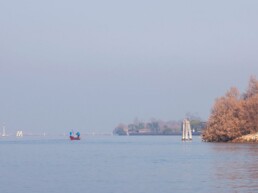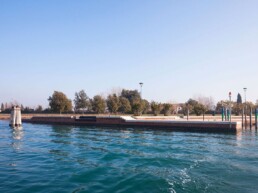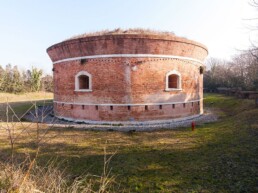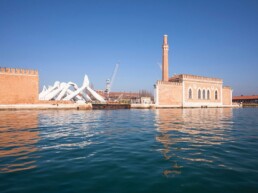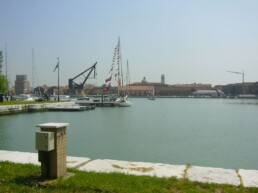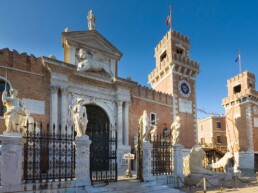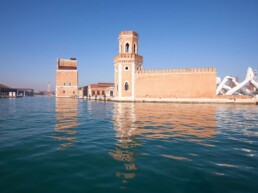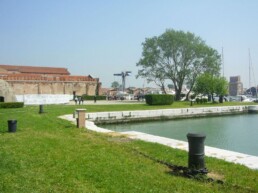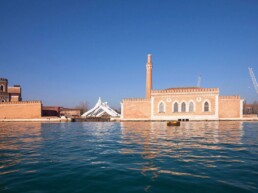San Francesco del deserto
With a series of cypresses almost closing off its entire perimeter, the island of San Francesco hides itself from the visitor’s view. A solitary place with a spiritual silence, it hosts a community of Franciscan friars dedicated to meditation, work and reflection. It was on this island that in 1220 St. Francis decided to stop and pray when returning from the East and was deeply impressed. This episode, which has been handed down to us by his biographer San Bonaventura da Bagnoregio, was followed by the desire to found a place of silence and meditation right here. Following the donation of the island to the Franciscan friars by the Venetian owner Jacopo Michiel, the current convent of a minor order of Franciscan friars was founded in 1233.
With its convent, its gardens with cypresses, the two cloisters belonging to the beginning of the foundation and the Renaissance period,the island of San Francesco offers an intense introspective experience for all those who wish to get closer to the more spiritual side of the Lagoon.
Forte Sant'Andrea
In the North Lagoon, in front of the Lido port, stands the island of Vignole, at the end of which the Forte di Sant’Andrea immediately juts out. A masterpiece of military architecture, the fortress was built around the end of the sixteenth century according to a design by Sanmicheli and is made up of large blocks of Istrian stone. The artillery of the Serenissima thundered from this fort for the last time in 1797, when the Venetian commander Domenico Pizzamano wanted to oppose the entry of the French ship “Le Libérateur” into the port of Lido, killing the commander Lauger.
Although a long section of the building unfortunately collapsed due to the corrosive and disintegrating action of the waves’ motion on the foundations, from the lagoon it is still possible to admire the central door and the two side arches in equal measure, which are distinctive of San Michelian architecture. As the toponymy recalls, the island’s remaining strip of land is dedicated to horticulture and therefore rich in cultivated fields and scattered houses.
Sant'Erasmo
The island of Sant’Erasmo is located in the centre of the Murano, Burano and Punta Sabbioni Islands.
Used during the Middle Ages as a service port for the islands of Murano and Torcello, it rises between the mouths of San Nicolò and Treporti, thus acting as a dividing coastline between the lagoon and the Adriatic. Sant’Erasmo is territorially larger than all the islands in that area, and is commonly called “the vegetable garden of Venice”, thanks to the rich agriculture it developed over the centuries. Its artichokes, cardoons and asparagus are famous. Its production of wine was also significant thanks to the numerous vineyards that occupied a large part of the agricultural territory.
Despite the numerous plots of land, on the island it is possible to visit not only the church of Cristo Re but also the Massimiliana Tower, a recently built military structure. It was built during the French and Austrian occupation with the aim of defending the lagoon by exploiting its strategic position. Today Sant’Erasmo is an island immersed in colours and nature, a quiet place away from the liveliness of nearby Venice.
Arsenale
The Arsenal is a complex of shipyards, workshops and warehouses from which the Venetian ships – the basis of the political and military power of the Republic of Venice – set sail.
It was first a peripheral place then a highly specialised production centre for the construction of commercial and war ships.
It occupies about 46 hectares in the eastern part of the city. It is defended by a wall that encloses the warehouses and buildings.
The houses of the workers and collateral businesses were placed around it. Arsenal derives from the Arabic “darsina-a”, meaning house of industry, which later became Darsena.
It was built at the behest of Doge Ordelaffo Falier in 1104. It was progressively expanded with a series of construction sites to the north, whereas the west area was used for the gunpowder department and then, after a fire, it was transformed into the galley department.
In the second half of the 19th century the changing needs of the navy led to a drastic upheaval within the “arsenal” enclosure with the creation of three new dry docks.
During the Second World War, anti-aircraft shelters were built in reinforced concrete. The land portal of the Arsenal dates back to 1460. It was attributed to Antonio Gambello and looks like a triumphal arch.
Request Information
To book a service or request a quote without any obligation, you can send us an email or fill out the following form.


